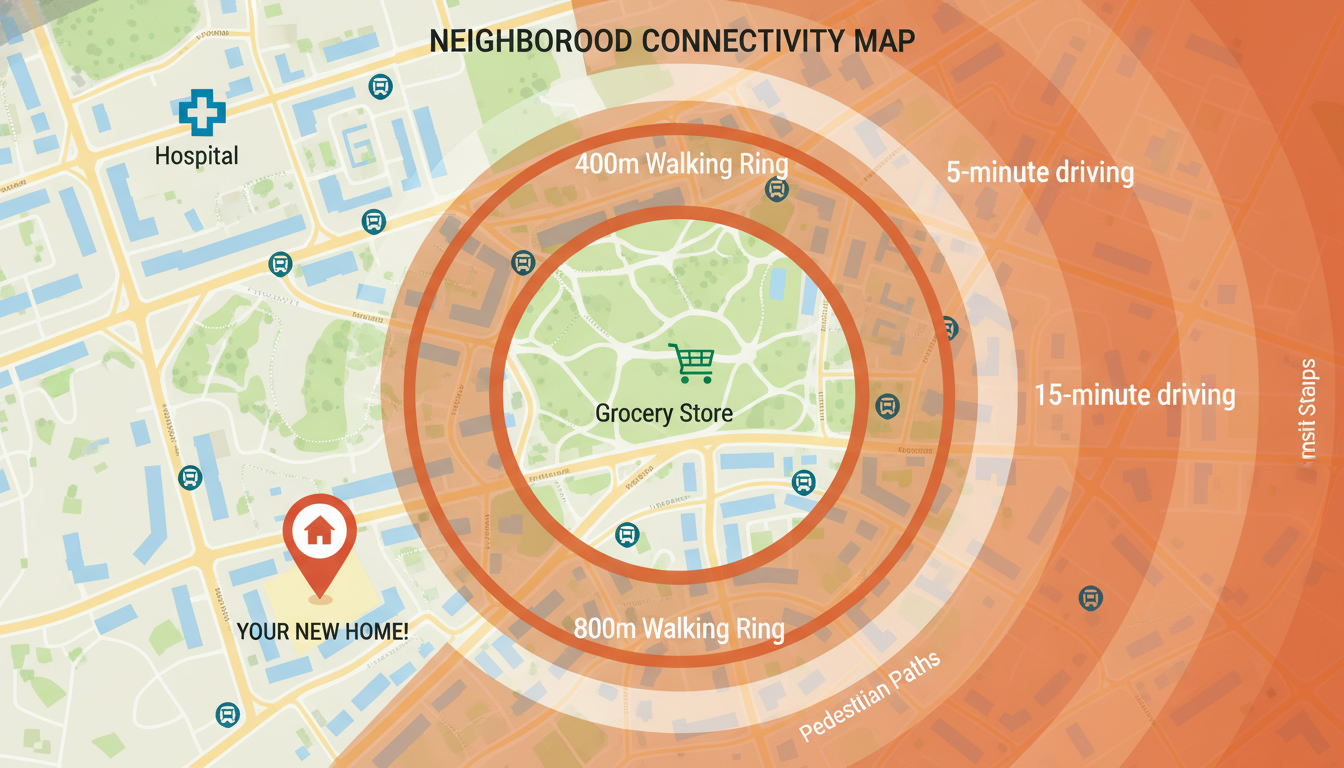How close are essential services like hospitals and grocery
stores?
You’ll be shocked how close hospitals and grocery stores actually are — the real distance explained.
Quick answer buyers want
Most buyers think essential services are far. They aren’t. In urban and inner-suburban areas, groceries are commonly a 5–10 minute walk (about 400–800 m). Hospitals are usually a 5–15 minute drive (3–10 km), depending on the city and traffic. Those ranges are what buyers should expect when evaluating neighborhood and location.
Why this matters for your home choice
Proximity to hospitals and grocery stores affects convenience, safety, and resale value. Walkability to grocery stores increases day-to-day quality of life. Reliable access to a hospital matters for families and seniors. Realtors use these factors to rank neighborhoods and predict price movement.
How I measure proximity — simple, repeatable metrics
- Walk time: 5-minute walk ≈ 400 m, 10-minute walk ≈ 800 m. Use this for grocery, pharmacy, daycare.
- Drive time: 5–15 minute drive for hospitals in most metro areas. Use live traffic at commute times to confirm.
- Transit access: Is there a direct bus or subway under 15 minutes to a hospital or main grocery hub? That changes the practical distance.
These metrics match industry tools like Walk Score and local transit planners. They give consistent, comparable results across neighborhoods.

Real examples and practical checks
- Grocery: Look for a full-service grocery within 800 m. If you find one inside that ring you can ditch a car for weekday shopping.
- Pharmacy & urgent care: These are often on the same blocks as groceries. If the nearest full hospital is 10–12 minutes away, check for urgent-care clinics closer.
- Hospital access in rush hour: A 6-minute drive at 2 a.m. might be 15 minutes at 5 p.m. Always test drive the route at peak times.
When I assess a listing, I map these services and list exact walk and drive times. This removes guesswork for buyers and investors.
What buyers must ask during a showing
- How far is the nearest grocery by walking route, not straight-line distance?
- What’s the typical drive to the nearest emergency department at 8 a.m. and 5 p.m.?
- What transit lines serve the hospital and grocery areas?
Answers to these three questions turn marketing fluff into usable data.
Bottom line: location is measurable, not magical
If you want a home where essentials are accessible, use clear metrics: 400–800 m for groceries, 3–10 km or 5–15 minutes drive for hospitals, and confirm with peak-time checks. That approach separates smart buyers from hopeful ones.
Need a precise neighborhood report for a property? I build walk/driving maps, transit checks, and a one-page neighborhood score. Contact Tony Sousa — local realtor who does the math for you.
Email: tony@sousasells.ca
Phone: 416-477-2620
Website: https://www.sousasells.ca





















